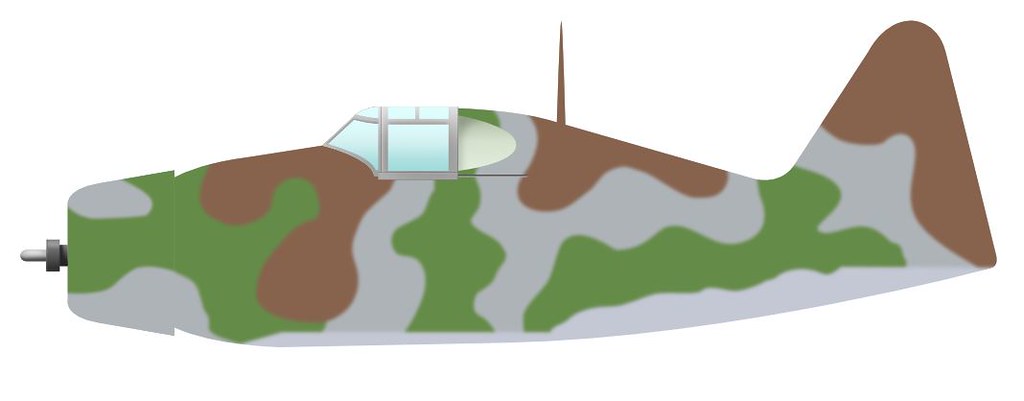What if I take a 1930s French fighter prototype and I draw it as it might have evolved in WW2?
I Couldn't Do Any Worse Than The French, Could I?
That said, the 30s was a transitional period, a stepping stone between the designs and tactical dogma that came out of the First World War and the high tech future as represented by - for example - the likes of Willy Messerschmitt's genius. To be fair, the Germans lead the way because - as we all know now - they were intent on war, so everyone else was always going to lag behind.
It was a confusing time where the rest of Europe was left scratching it's collective head and wondering just what was the right way to best the Germans (and also wondering just how much time left they had to do it). So in this turmoil nations were desperately pulling potential aircraft designs out of their pockets like a party clown pulls a string of flags!
...Predictably, many of these 'new' designs were...Er...'Merde'!
You Canna Polish A Jobby! Or Can You?
As comical as the French response to the coming storm clouds might seem to us now (with the benefit of hindsight - bearing in mind that the Hawker Hurricane first flew in November 1935) they weren't the only ones didn't quite grasp which way the technological wind was blowing.
Though strangely enough I did read that although France finally woke up and smelled the café, so to speak, and rushed procurement of a brace of more modern monoplane fighters just in time for WW2, it might have been better if they had simply modernised their force of current aging designs instead. I'm not sure how true that is though, but...
"France started rearming much later than Germany, but it was not fatally late. The mistake was the planes the French decided to build. The RAF and Luftwaffe fought the air battles of 1940 largely with planes conceived in the early thirties or upgrades of these designs. For France, this was the Amiot 340, M.S.406, Potez 63, and Mureaux 113 generation. France, however, decided these were not good enough and placed all their trust in the next generation. This was not necessary. The makeshift Potez 633 was a reasonable equivalent to bombers like the Dornier 17. The Mureaux 117 was no more obsolete than the Henschel Hs 126 the Luftwaffe used successfully. An upgraded M.S.406 could not have matched the Bf 109, but it might have been good enough. These were the only planes that France could have built in sufficient numbers in time for the 1940 campaign." French Air Force 1940 Analysis - Weaponsandwarfare.com
Hmmm...In any case, this is exactly what this drawing project is going to do. I am going to take one of the original French designs from early 1930s and update it into a fictional 'modernised' configuration to show - hypothetically - what might have been.
'Jobby' Polished!
The plane I have chosen to 'make over' is a one by a French company that I had never heard of - Wibault. Though, from what I have read...
"The Wibault company or Société des Avions Michel Wibault was a French aircraft manufacturing company. Its workshops were located in Billancourt, in the Paris area...The Wibault company was established in 1919 by Michel Wibault. The planes produced by Wibault in the first decade included reconnaissance, fighter and bomber aircraft, but production shifted mainly to civilian aircraft after 1930...Some of the Wibault designs were quite successful..." Wikipedia
So there you go, who knew!
Anyway, back to the French 1930 fighter competitive tender programme and Wibault entered their 'Wib 313', a tubby little monoplane with and open cockpit and fixed undercarriage...
NOW... What attracted me to this particular aircraft was that it's general shape reminded me of the American Republic P-43 Lancer (the precursor to the legendary P-47 Thunderbolt)...
In many ways the Wib 313 resembles a precursor to the aircraft which eventually became the P-47 and this is what piqued my interest. What would have been the eventual outcome if Wilbault had developed their 313 design, would it evolve into a sort of French Thunderbolt?
The Storm is Coming...
My thinking is, what if Wibault - who, by the way, failed to win the French competition - had continued the development of their fighter and included more modern accoutrements like a close cockpit and retractable undercarriage? These were the accepted 'standards' for military fighters by 1940 and I think any further work by the French company must have included these additions.
IF they had done, there is no reason why they might not have had a fighter more suitable for meeting the Luftwaffe during the Battle of France. I'm still not saying that it might have been - even in an upgraded form - a match for the Me.109 BUT it may well have been ready and available in the numbers that the French were in desperate need of in 1940.
[In actual fact, the original Wib 313 failed to win selection as the next French fighter because of poor performance, most notibly it's sluggish rate of climb. Wibault did attempt to rectify the criticisms of it's design but protracted development meant that the Dewoitine D.500 (of all aircraft) was instead awarded the contract! So, we will never know what might have been.]
The Wibault 400 'Orage'
Let's imagine the above design if some of the work that was needed had been done and that the French had accepted it into service. What would the 1940 version of the Wib look like? Here's my guess...
Additionally, I have chosen a potential name for the fictional aircraft - the 'Orage' (which means 'thunderstorm' in French). And I imagine that it may have been possibly has some equivalence to a factual period fighter like the Curtiss Hawk Model 75 (which was used by the French in 1940).
Hypothetical specs: The Wib 313 had a projected performance of a top speed of 372 km/h (231 mph) compared to the Curtiss Hawk's of 504 km/h (313mph), but an 'updated' Wib may very well have engine improvements by the start of the war. Likelihood is it's Gnome rotary engine would have been upgraded from the 313's Gnome-Rhône 520 hp 9-cylinder radial to the 1,000 hp Gnome-Rhône 14N-25 engine (as used in France's Bloch Mb.150 fighters). This would have given the Orage a potential top speed of 316 mph (509 km/h) or thereabouts. The Me.109's speed was 365 mph (588 km/h) which kinda puts things into a depressing perspective and shows just how much of a head start the Germans got themselves...
Er...Am I getting to carried away with this yet? 😄
Let's Get Drawing!
OK, my day dreaming aside, let's getting doodling. As usual I'm using the vector software Affinity Designer and having sketched the outline (see above) it's time to start the blocking out of the foundation colours. In essence, what I am doing is starting at the 'back' (lowest level) and working my way out...
I did add some elementary shading to some small parts just as an experiment and to give me an idea of the direction that I'm going with this. But the most important part at this point is building up a palette, in the above snapshot I have applied the basic light French grey.
The camouflage scheme of the French Air Force's 1940s fighter was - to my mind - a bit garish - but is very distinctive [unlikely to be confused with the Luftwaffe - was that the point?]. Having said that, they did also add some very attractive embellishments with their unit markings.
At this point it worth noting my Wib. 400's rough similarity to the Curtis 75, Brewster Buffalo or the Dutch Fokker D.XXI, it's 'contemporaries' of the period. I'm not sure what this infers, perhaps something about the convergence of fighter designs of the late 1930s, particularly when the aircraft was equipped with a radial engine? Though I will say that, although all these aircraft - including my speculative Wib. 400 - were outclassed by the new generation of WW2 fighters in skilled hands they could still be useful aircraft (the Finns proved this point).
Anyhoo... Having laid down the basic flat colours in the design I then started to work into the detailing and then the shading. In the following screenshot you can see my work on the wing as I start to experiment with how to add panel line detail. I haven't done a lot of panel like work in my previous aircraft drawings so I'm still a bit unsure of the best way to do this...
What I have done is added in dark vector lines (or 'strokes') to block out the network of interconnecting panels on the wing and then I have tested out some colour variation methods which I apply to these lines. There is a mixture of flat single shaded lines and a line which has been converted into a 'object' and then had a gradient applied to it to imply the variation of tone across the wing.
I am toying with the idea of making ALL the lines one cohesive spider web of panel lines and applying the shading onto this as one cohesive structure. This way I get a consistent graduation of shade on the lines going across the wing from light to dark. [This is me thinking out loud!]
In PART 2 of this project we shall see if my cunning plan works. 😉
--------------------
Go to the new part: Part 2 of the 'Paper Aeroplane' project.











Post a Comment